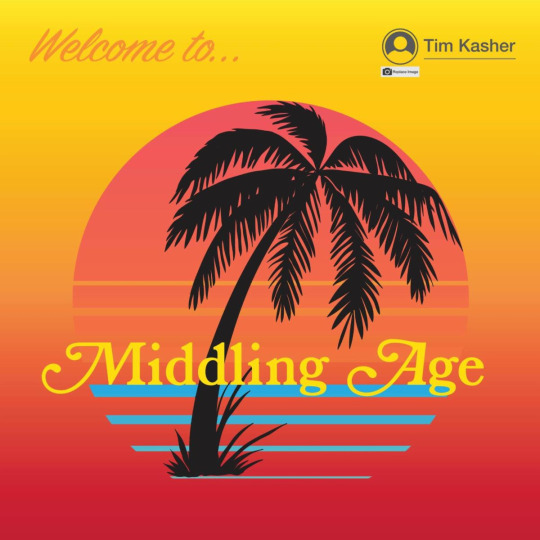#laura rosenstock
Text

Richard Serra, Tilted Arc, (weatherproof steel), 1981 [installed at Federal Plaza, New York, NY; removed March 15, 1989] [MoMA, New York, NY. © Richard Serra / ARS, New York]
Bibl.: Rosalind E. Krauss, Richard Serra / Sculpture, Edited and with an introduction by Laura Rosenstock, Essay by Douglas Crimp, The Museum of Modern Art, New York, NY, 1986, p. 137 (pdf here)
#graphic design#art#sculpture#structure#geometry#catalogue#catalog#richard serra#rosalind e. krauss#laura rosenstock#douglas crimp#moma#the museum of modern art#1980s
132 notes
·
View notes
Text
cannot get over how the main melody in jeff rosenstock's song rainbow
youtube
shares a lot of elements with the melody in against me!'s true trans soul rebel
youtube
and it's making me REALLY want a ska cover of the latter song
24 notes
·
View notes
Text



JEFF ROSENSTOCK AND LAURA STEVENSON ARE GREAT GO LISTEN TO THEM I LOVE!!!!!!!! ❤️❤️❤️❤️❤️❤️❤️❤️❤️
#jeff rosenstock#laura stevenson#art#drawing#digital drawing#digital fanart#indie music#indie artist#punk rock#bottom of the hill#san francisco
50 notes
·
View notes
Text
Jeff & Laura - Razor Love (Neil Young)
And all I've got for you is the kind of love
That cuts clean through
#jeff rosenstock#laura stevenson#jeff & laura#neil young#razor love#younger still#music#folk#I GOT TO BET THAT UR OLD MAN.... BECAME FASCINATED WITH HIS OWN PLANS......... [clawing]
13 notes
·
View notes
Video
youtube
A Poem by AJJ from the album Good Luck Everybody
#somethingneweveryday#music#ajj#ajj band#andrew jackson jihad#sean bonnette#preston bryant#dylan cook#kimya dawson#owen evans#ben gallaty#mark glick#thor harris#sophie mctear#jeff rosenstock#laura stevenson#the tucson singers#tucson singers
24 notes
·
View notes
Text


jeff & laura are BACK photos by dan ozzi
3 notes
·
View notes
Text
+It just hit me I'm going to see Jeff Rosenstock play in my original home City and see a bunch of old friends at the club I used to work. Or any Tumblr Jeff fans going to be there?
youtube
#jeff Rosenstock#Laura Stevenson#Neil Young#this post is about no one in particular#unless you know?#personal#homecoming#Youtube#operation catch and release
6 notes
·
View notes
Text
Tim Kasher Interview: The Ennui of the Days

Photo by Erica Lauren
BY JORDAN MAINZER
Writing about aging isn’t new. It’s certainly not new for Tim Kasher, the frontman of beloved Nebraska indie rock bands Cursive and The Good Life. But on Middling Age (15 Passenger), his recently released solo album, he dives uncomfortably deep into anxieties about getting older, presenting deft perceptions on time and space from sources of all ages.
Much of Middling Age was written before COVID, but when Kasher found himself sitting around with little to do, he decided to finish it remotely, seeking remote contributions from such heavyweights as Against Me!’s Laura Jane Grace, Jeff Rosenstock, Cloud Nothings’ Jason Gerycz, and even a couple of his Cursive bandmates. The final product is stripped down but still rich with flute, violin, kalimba, and guest vocals of all timbres. None other than Kasher’s 9-year-old niece, Natalie Tetro, introduces the album on “Middling Age Anxiety Prologue”, with a song of her own within it called “Long Days”. Over acoustic strumming and whooshing instrumentation, Tetro waxes on about how “seconds feel like minutes” and “minutes feel like ten minutes”. Sure, I remember how when I was Tetro’s age, the idea of a whole year held more weight and sure seemed longer than it does for me today. But to hear such words out of the voice of someone her age is simultaneously eerie and comforting, a pure expression of the human condition, our collective inability to escape it, and our desire to eventually live with it. It contextualizes the rest of the album. “Is the point of this just to survive?” Kasher asks on “100 Ways To Paint A Bowl Of Limes”. It seems like the answer is yes. “We don’t know where we come from / We don’t know where we belong / We don’t know when we’ll be gone.../But you don’t gotta beat yourself up about it,” Kasher realizes later on. “In the end, we’ll pretend we’re not scared to death,” he sings on the layered “Whisper Your Death Wish”. If you can convince yourself, you’re doing pretty well.
I spoke with Kasher over the phone a few months ago about Middling Age. He detailed the inspirations behind the record’s structure, the truth behind one of its more twisted stories, how he approached the collaborations, and whether he relates to the songs the same way as when he first wrote them. Read our conversation below, edited for length and clarity.
Since I Left You: A lot of Middling Age was written before the pandemic, and the pandemic made you want to finish it. Looking back, why was it the pandemic that made you wanted to revisit songs about themes of aging? Was there a moment or a series of moments that triggered it for you?
Tim Kasher: As far as calling it Middling Age, it’s an overview of what the record kind of looks like to me: the anxieties of getting older. I fear that I’m becoming a broken record about aging on the records I’ve been doing, but it’s an obsession I don’t know how to get out of because we keep getting fuckin’ older and older. Does it pass? For me, it feels like it intensifies. I’m 47. When I look back at what I was writing at 37, I’m like, "Oh yeah, you were worried about getting old.” I’m a decade further into it now. A decade later, I’ll feel the same way, I imagine. How does one stop obsessing about that? I don’t know. As far as writing about stuff like that, it’s been my MO inadvertently all along: writing about what’s processing you at the time.
SILY: You tackle different parts of the life cycle on this record. The voice of your 9-year-old niece bookends it, but throughout it, you talk about death.
TK: I can’t help but want to bookend records. As long as nobody totally shits all over me for continuing to do it, I’ll continue to do it. [laughs] It’s a nice aesthetic. It’s like putting a bow on it. The idea of working with her was born out of my sister proudly sending me the stuff she was working on. I sincerely find she’s quite good at what she’s doing for 9 years old. I further thought that having a very young voice at the top and at the end, at the tails of the album, I can’t say specifically what it says, but it carries a certain amount of weight to it in my head. Her journey’s next. She’s going to go through all this as well.
SILY: There’s also something innately eerie about children singing. There’s an inherent innocence to it, but coupled with the themes of the record, you’re just thinking about that innocence being dashed.
TK: Oddly, and of some interest, I kind of masked her on the song she opens the album with, with a lot of excess digital noise. That song, “Long Days”, is like this sweet little 9-year-old already singing about the ennui of the days and weeks stretching out before her. It’s pretty heavy.
SILY: Those whooshing effects are a motif throughout the record, coming at the beginning and end of some songs. Did you include those to add a semblance of narrative to the album?
TK: Yeah. It definitely was a post-album-writing idea. I’m no stranger to that, too. As far as putting aesthetic bows onto an album, I like to do stuff like that to offer more cohesion, not just for the listener but for me, as well. After an album is finished and I’m putting those final touches on it, I’m spending a lot of time thinking what it’s about. That’s important for me. It’s probably more important for me than it is for anyone else. The more I can try to figure out what the record’s about, the better I am at communicating to the listener and giving them a better shot at reaching understanding and resonance.
SILY: A lot of these songs are centered around your--for lack of a better term--existential crisis. The one that does reference some events that others might be familiar with is “The John Jouberts”, when you sing about naming a band after the Nebraskan serial killer. The woman who came to see your band whose son was a victim and sees the band name spray painted across the drums and became furious: Is that a true story?
TK: It’s not. The first verse--and I guess a lot of what the song comes from--is over a decade ago, I wanted to start a really fun punk rock band with some friends and do it the way I used to do it when I was young. All my musician friends growing up would meet up 2-3 times a week with a 6-pack and fuck around. I don’t really get to do that any more. That’s beside the point. But I really wanted to name the band The John Jouberts, who is the absolute boogeyman from our collective Omaha childhoods for boys my age, because he was kidnapping little boys and murdering them. It’s so deeply rooted in my psyche. It was the type of thing where the news would probably say, “And the city is forever changed.” That was the environment back in ‘82-’83. In short, I thought it would be a cool name because it was subversive and aggressive. I grew out of it the more I thought of it because I thought, “This is kind of fucking rude.” This was a real person who murdered children. I never did start that band or name that band, but the song started with me thinking about that and then an opportunity to let these ideas out. [It’s basically me saying,] “By the way, I’ve been thinking about John Jouberts for the last 40 years.”
SILY: It’s multi-layered. You say in the song that it’s a song for some of the victims, but it’s also a song about different perspectives and legacies. When you sing, “What a shitty thing to say, ‘The good die young,’” it’s almost like you’re shitting on the idea of a legacy being important.
TK: I think that’s an astute observation, and I appreciate that a lot. Working on the anxiety sound pieces in between songs, that’s all part of the process of me understanding what the record’s about. Your impression of that song does help tie in the song, [which] I feel like is a bit of an outlier on the record. I always thought it fit as a flashback or looking back at our childhood, a fitting tangential narrative for thoughts about aging and existentialism.

SILY: It seems like the looks back translate over to the instrumentation, too, like when you reverse the guitars at the end of “100 Ways To Paint A Bowl Of Limes”. You’re again toying with the idea of a linear narrative and mirroring how our minds bounce all over the place.
TK: That’s great. I should have had you write the liner notes.
SILY: What are the voices sampled at the beginning of “Up And Cut Me Loose”?
TK: It’s found footage that I happened to find online. I just wanted to set it in a bar environment. Sometimes, I feel like a song is served better when it has an aural placement to put you there. Now, when I hear it, I imagine it as that somber gentlemen sulking at the bar chatting with whoever listens to him.
SILY: Do you find it eerie and uncanny that the actual person whose voice that is may hear it and recognize themselves?
TK: [laughs] I sincerely have never thought about it. I just think that would be too wild of a coincidence for a small record like this to find those ears.
SILY: Did you have folks like Laura Jane Grace and Jeff Rosenstock in mind when you wrote their arrangements on “Forever Of The Living Dead”?
TK: Everything was very after the fact, in a very casual way. Laura and I had been in a dialogue. She was being very considerate about appreciating the solo stuff I had been doing over the years. I told her, “I’m working on one right now. If you want any involvement, I’d be happy to have you.” With Jeff, I thought a saxophone solo would be the perfect timbre. The concept is embedded in our culture. “Walk on the Wild Side” was one thought I had in thinking of that cool, smooth, easygoing saxophone feel, so I thought, “Who do I know that plays cool saxophone parts?” I entrusted Jeff to it because he has such a great sense of melody and is such a great songwriter. I’m so happy with the way it turned out. Macey Taylor, I think I posted something online about being in the middle of working on this record, and Macey reached out and was like, “Hey man, I’m just sittin’ on my ass in the middle of this pandemic, whatever you want.” Macey is this amazing bass player. “100 Ways To Paint A Bowl Of Limes” was still in an infant stage, and I wasn’t really sure what to do with it, so I thought, “Just do the biggest, busiest bass line you can think of.”
SILY: What’s the inspiration behind the cover art?
TK: It’s an amalgam of a few ideas. The whole cover of the back is one large anonymous avatar, like when you’re on IMDB and they’re asking you to fill out your information and to put a picture in. I’ve been thinking about that blank, anonymous avatar and how anonymous and isolated we’re all feeling on the internet now. We didn’t go that route [for the front], but we wanted to create something that felt like a website, like a Second Life sort of thing but not wanting to lean into it too hard.
SILY: These songs have been around for years at this point. Do you still relate to them the same way today as when you first wrote them?
TK: I still feel the same, but it’s a totally valid question. I’d probably answer it more that because of this pandemic, this is the longest I’ve ever had to sit with a batch of songs. I set them aside multiple times because there was no rush to do anything with them. I felt concerned that, as a result, they would come across as old to me. I’m still struggling with that a little bit, but for the most part, it happens with [albums and movies all the time]. Things just come out late, and you just have to put your thoughts and feelings on hold, and now, here we are talking about it. It’s new now. It’s new for listeners. I’m hoping to attach myself to everybody else who feels like they’re new songs.
SILY: Are you currently working on anything?
TK: I’ve been working on a Cursive record. I started a Patreon over the pandemic to use up my time and find some element of a revenue stream to stay afloat. I’ve been staying busy with all of my own fruitless efforts of writing screenplays and trying to get things made. Same old stuff.
youtube
#tim kasher#interviews#15 passenger#jeff rosenstock#jason gerycz#middling age#erica lauren#cursive#the good life#against me!#laura jane grace#cloud nothings#natalie tetro#john jouberts#macey taylor#second life#patreon
6 notes
·
View notes
Text
#harvest moon#what a sweet cover#i love jeff rosenstock and laura stevenson#jamz#neil young#long island’s finest#Spotify
1 note
·
View note
Text

Richard Serra, Tilted Arc, (weatherproof steel), 1981 [installed at Federal Plaza, New York, NY; removed March 15, 1989] [MoMA, New York, NY. © Richard Serra / ARS, New York]
Bibl.: Rosalind E. Krauss, Richard Serra / Sculpture, Edited and with an introduction by Laura Rosenstock, Essay by Douglas Crimp, The Museum of Modern Art, New York, NY, 1986, p. 52 (pdf here)
#art#sculpture#structure#geometry#catalogue#catalog#richard serra#rosalind e. krauss#laura rosenstock#douglas crimp#moma#the museum of modern art#1980s
60 notes
·
View notes
Text
This Jeff Rosenstock & Laura Stevenson collab of Neil young tunes is so fucking good I can’t even deal
#Spotify#where the heck is jeff rosenstock??!#it’s been so long since i’ve revisited laura stevenson and she makes me so happy
1 note
·
View note
Audio
"Razor Love" by Jeff Rosenstock, Laura Stevenson https://ift.tt/PVMr6Gn
0 notes
Audio
1 note
·
View note
Text
Razor Love — Jeff Rosenstock & Laura Stevenson [Neil Young]
#Jeff Rosenstock & Laura Stevenson#Jeff & Laura#jeff rosenstock#laura stevenson#Younger Still#Neil Young#Razor Love#Bandcamp
0 notes
Text
JEFF ROSENSTOCK and LAURA STEVENSON wsg Gladie @ The Sanctuary
JEFF ROSENSTOCK
LAURA STEVENSON
Gladie
TICKETS
ALL AGES
DOORS @ 7pm
#The Sanctuary#Hamtramck#Detroit#Michigan#Jeff Rosenstock#JeffRosenstock#Laura Stevenson#LauraStevenson#Gladie
0 notes
